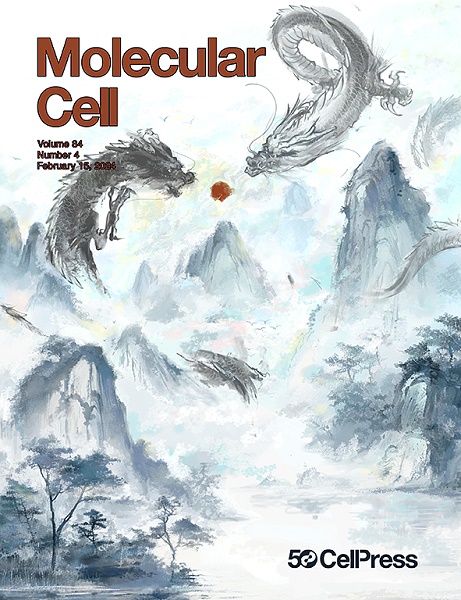A network of P-body and Whi3 condensates adjusts cell fate decisions to cellular context
IF 16.6
1区 生物学
Q1 BIOCHEMISTRY & MOLECULAR BIOLOGY
引用次数: 0
Abstract
Cells use information about their environments and internal states to decide whether to proliferate, differentiate, or enter non-proliferative states such as quiescence and senescence. But how do they integrate this information to make unambiguous decisions? Here, we describe how the interaction between two independent condensates, P-bodies and Whi3-dependent condensates, enables individual yeast cells to integrate information about their biological age and the presence of potential mates during fate decisions. Both formation and interaction of these condensates were necessary and sufficient to drive old cells into senescence and store age information in the yeast mother cell at mitosis. This same network also primed old cells to choose proliferation over mating when exposed to mating pheromone, demonstrating that it injects contextual information into multiple decisions. Thus, biomolecular condensates and their interactions can collect and integrate contextual information to adjust cellular decisions to overlapping life events.p体和wh3凝聚物的网络根据细胞环境调整细胞命运决定
细胞利用其环境和内部状态的信息来决定是否增殖、分化或进入非增殖状态,如静止和衰老。但是他们如何整合这些信息来做出明确的决定呢?在这里,我们描述了两种独立凝聚体,p体和wh3依赖凝聚体之间的相互作用,如何使单个酵母细胞在命运决定中整合有关其生物年龄和潜在配偶存在的信息。这些凝聚体的形成和相互作用是驱使老细胞衰老和在有丝分裂时在酵母母细胞中储存年龄信息的必要和充分的条件。当接触到交配信息素时,同样的网络也会让老细胞选择增殖而不是交配,这表明它在多种决策中注入了背景信息。因此,生物分子凝聚物及其相互作用可以收集和整合上下文信息,以调整细胞决策以适应重叠的生命事件。
本文章由计算机程序翻译,如有差异,请以英文原文为准。
求助全文
约1分钟内获得全文
求助全文
来源期刊

Molecular Cell
生物-生化与分子生物学
CiteScore
26.00
自引率
3.80%
发文量
389
审稿时长
1 months
期刊介绍:
Molecular Cell is a companion to Cell, the leading journal of biology and the highest-impact journal in the world. Launched in December 1997 and published monthly. Molecular Cell is dedicated to publishing cutting-edge research in molecular biology, focusing on fundamental cellular processes. The journal encompasses a wide range of topics, including DNA replication, recombination, and repair; Chromatin biology and genome organization; Transcription; RNA processing and decay; Non-coding RNA function; Translation; Protein folding, modification, and quality control; Signal transduction pathways; Cell cycle and checkpoints; Cell death; Autophagy; Metabolism.
 求助内容:
求助内容: 应助结果提醒方式:
应助结果提醒方式:


